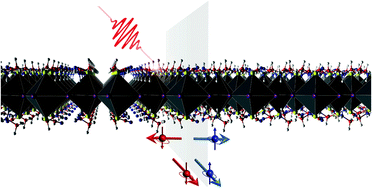Optical generation and electric control of pure spin photocurrent in a ferroelectric Ruddlesden–Popper perovskite (MA)2Pb(SCN)2I2 monolayer†
Abstract
In the field of semiconductor spintronics, spin current can replace charge current to perform logic operations, leading to information processing in spintronic devices with high integration density and low energy dissipation. However, the experimental generation of pure spin currents without an external magnetic field or magnetic electrode remains challenging. In the current work, based on first-principles calculations and nonlinear optical response simulations, we demonstrate that the optical generation and nonvolatile control of pure spin photocurrent can be simultaneously realized in a single-phase ferroelectric (FE) semiconductor Ruddlesden–Popper (RP) organic–inorganic perovskite (MA)2Pb(SCN)2I2 with a mono perovskite layer. Under the synergistic effects of the strong spin–orbit coupling (SOC) arising from Pb and I elements, spatial asymmetry induced by spontaneous ferroelectricity and unique C2v local symmetry, carriers around the band extrema of the (MA)2Pb(SCN)2I2 monolayer characterize the out-of-plane spins which are unidirectionally textured over the reciprocal space. Under the illumination of above-bandgap linearly polarized light (LPL), photo-excited electrons in “spin-up” and “spin-down” states will counterflow along the direction perpendicular to the mirror plane, leading to the pure spin photocurrent, whose magnitude can even exceed that of the photovoltaic charge current. More importantly, the spin photocurrent can be effectively manipulated through electric field induced polarization switching. Based on our predictions, the experimental prospects for the optical generation and nonvolatile control of pure spin photocurrent using a four-terminal device composed of a (MA)2Pb(SCN)2I2 monolayer are also proposed.



 Please wait while we load your content...
Please wait while we load your content...